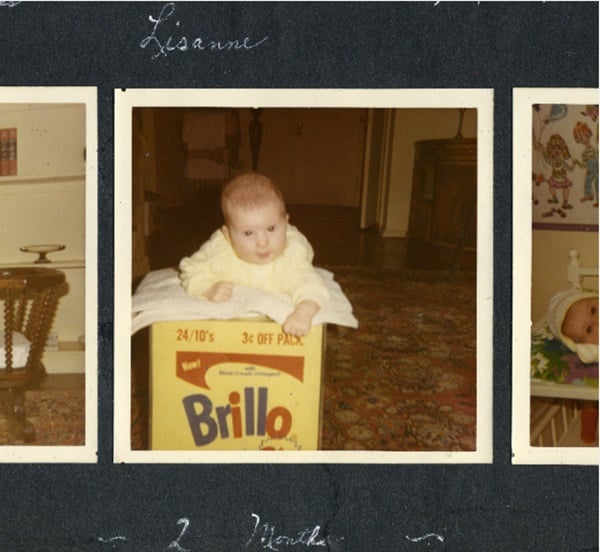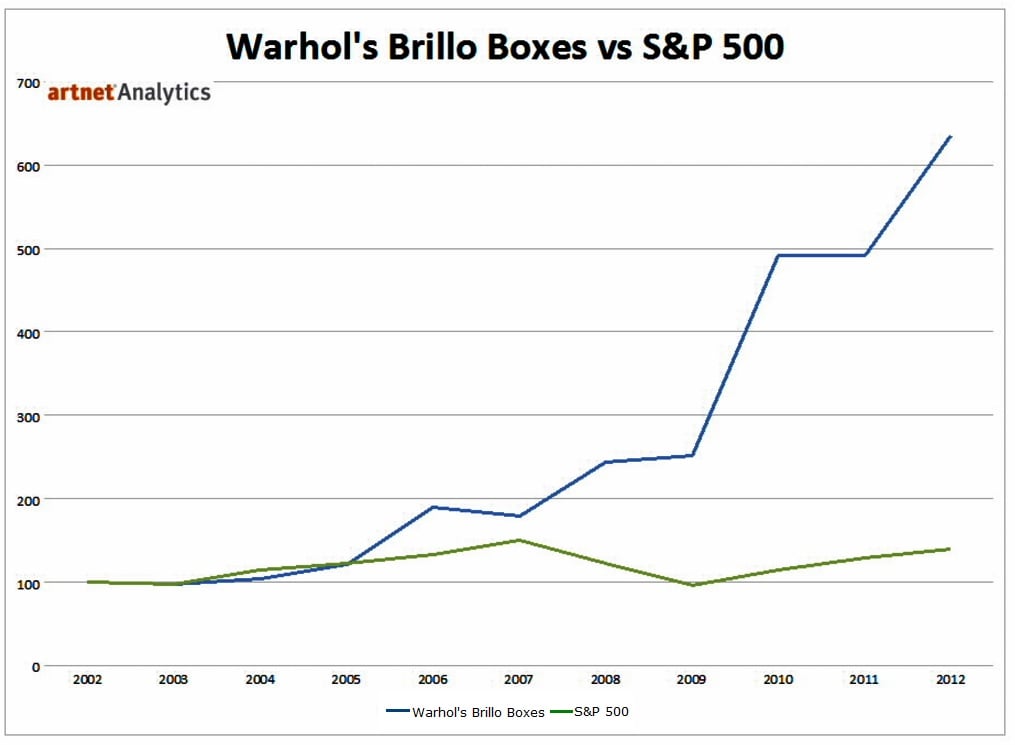Market
New HBO Documentary Traces Warhol’s Rise Through the Madcap Journey of One $3 Million Brillo Box
The tale of how the Pop artist's least glamorous creation went from $200 to $3.3 million.

The tale of how the Pop artist's least glamorous creation went from $200 to $3.3 million.

Eileen Kinsella

Thirty years after Andy Warhol’s death, and marking what would have been the iconic Pop artist’s 89th birthday, HBO is set to premiere a new documentary film by Lisanne Skyler, Brillo Box (3¢ Off), a highly entertaining and personal look at the ascendance of the Warhol market.
Skyler’s endearing story about her art-collecting parents’ acquisition and—in hindsight perhaps too-brief—ownership of a rare Warhol Brillo Box tracks the path of their pop art sculpture from the $1,000 purchase price in 1969 to its 2010 appearance at Christie’s New York where it soared to $3.3 million with premium. Along the way, it was owned by Charles Saatchi and Gagosian Gallery founding director Robert Shapazian.

Lisanne Skyler as an infant atop the plexiglass-enclosed Warhol Brillo Box her parents acquired in 1969. Photo courtesy Lisanne Skyler.
Skyler packs an incredible amount of information into a concise 40-minute film that will appeal to art aficionados and curious onlookers alike.The film effortlessly blends her own recollections, childhood photos, and interviews with her parents with comments from leading Warhol experts, including former Warhol Museum director Eric Shiner, Christie’s deputy chairman Laura Paulson, art critic Irving Sandler, and Warhol documentary producer Daniel Wolf, among others.
As young parents and avid art lovers, Skyler’s parents, Martin and Rita, often prowled Manhattan galleries, snapping up paintings and other works that, at that time, averaged a few hundred dollars apiece. When Martin happened on a 1964 yellow Warhol Brillo Box (3¢ Off) at Ivan Karp’s OK Harris Gallery in Soho in 1969, he scooped it up for a mere $1,000. Five years earlier, the boxes from first show were priced at just a fraction of that—just $200 apiece.
As a young father, Martin had the sense to put the box in Plexiglass to protect it from his potentially rambunctious toddlers (at one point in the film when Skyler asks what he was protecting it from, he tells her “You!”). He also demonstrated prescient market savvy when he realized it would be a good idea to get Warhol to sign it—which the artist did on the bottom in red crayon at his dealer Karp’s behest.
The Brillo Box remained in the Skyler’s living room for roughly two years. But Martin—who was always swapping pieces in and out of his growing art collection, and bought other works by artists like Frank Stella, Roy Lichtenstein, Neil Jenney, and Ralph Goings—eventually traded the Brillo Box for a painting by Peter Young. (Young, who makes an appearance in the film, gained some early prominence in the New York art world but quickly tired of the competitive and fickle scene, and decamped to Arizona, where he still resides.)
It wasn’t until more than two decades later that the Warhol market began making the stunning rise that has made his work famous worldwide, not to mention some of the most expensive contemporary pieces ever sold.
Skyler became curious about the fate of her family’s Brillo Box while watching Warhol prices start to soar in the mid-2000s.

Source: artnet Analytics
In 2013, as the film notes, artnet Analytics plotted the price performance of Brillo Boxes against the S&P 500, finding that they consistently outperformed the benchmark index—by far. The current record for a Warhol painting is $105 million, set at Sotheby’s in November 2013 for Silver Car Crash (double disaster in two parts) (1963).
To be sure, there was a long stretch of time after the Skylers offloaded their Brillo Box that the Warhol market was in the doldrums, particularly in the 1980s and early’90s—the years immediately following his death in 1987.
Through her research, Skyler found that the Brillo Box changed hands several times—selling for $35,200 in 1988 to British mega-collector Charles Saatchi. In a sign of the flat art market in the mid-’90s, the box sold for $43,700 in both 1993 and 1995, when Shapazian acquired it. The $3.3 million 2010 sale at Christie’s was from Shapazian’s collection.
Skyler, who teaches at the University of Arizona, has made other films, including a documentary about post-riot South Central Los Angeles (No Loans Today). She told artnet News that she started wondering what happened to this box, and “all the different decisions around it and what they reflect. I began by interviewing my parents because that was almost like a screen test.”
Skyler notes that the interviews in the film are all done after the $3.3 million sale price was achieved. As a result, the story is bittersweet. “It was really about reflecting,” she said. “There is this economic moment, and there is this feeling of ‘Wait, what does this object really mean to us?’ You could see how things change and there were little flickers of regret,” in talking to her parents.
“Art was a huge part of our existence as a family,” said Skyler. “We were the family that was constantly at the art galleries in Soho and at museums. Part of what motivates a personal documentary is that you want to preserve something. It’s not real until you tell a story about it.”
See the trailer below and catch the premiere on HBO August 7 at 10 p.m.